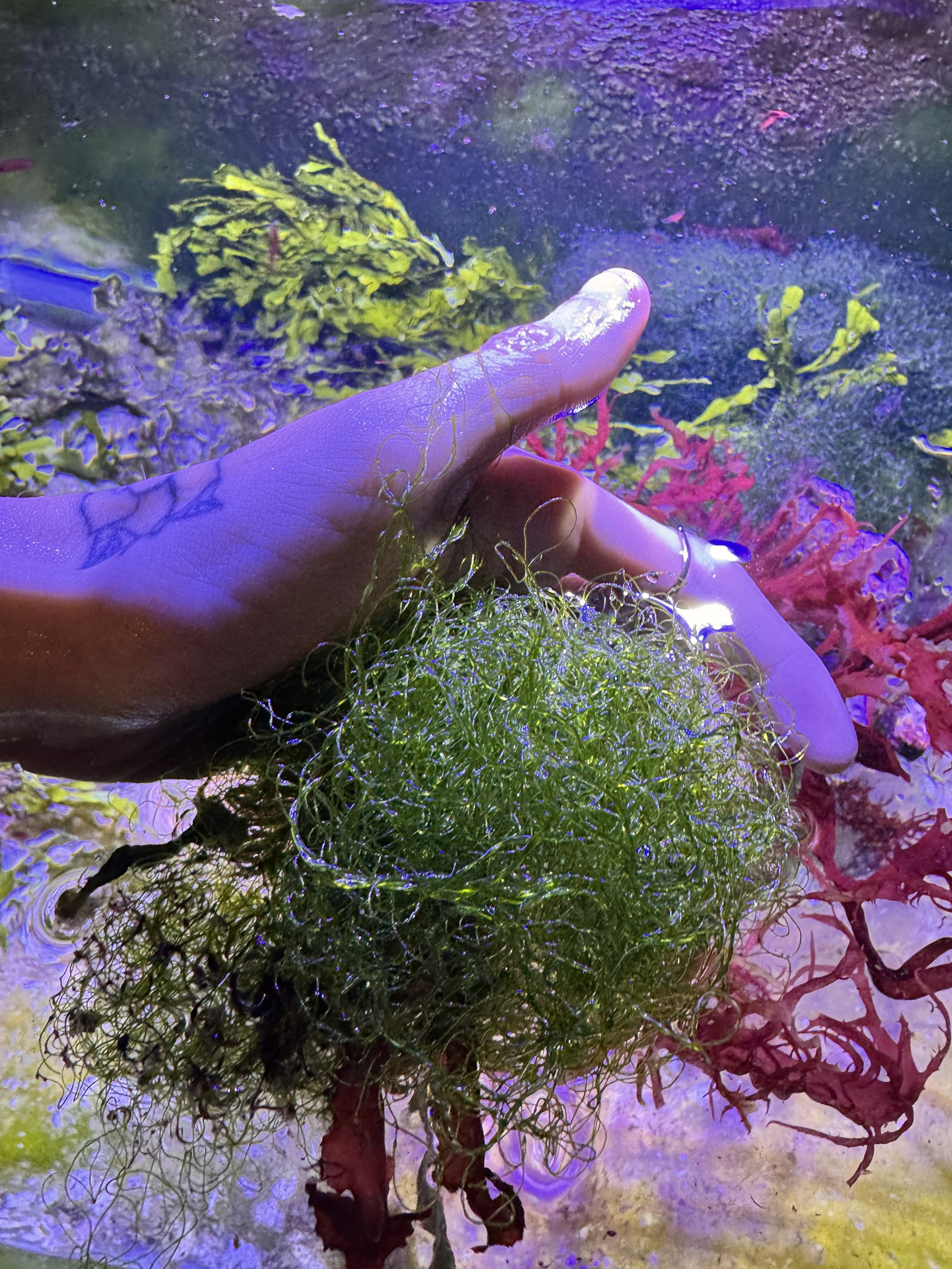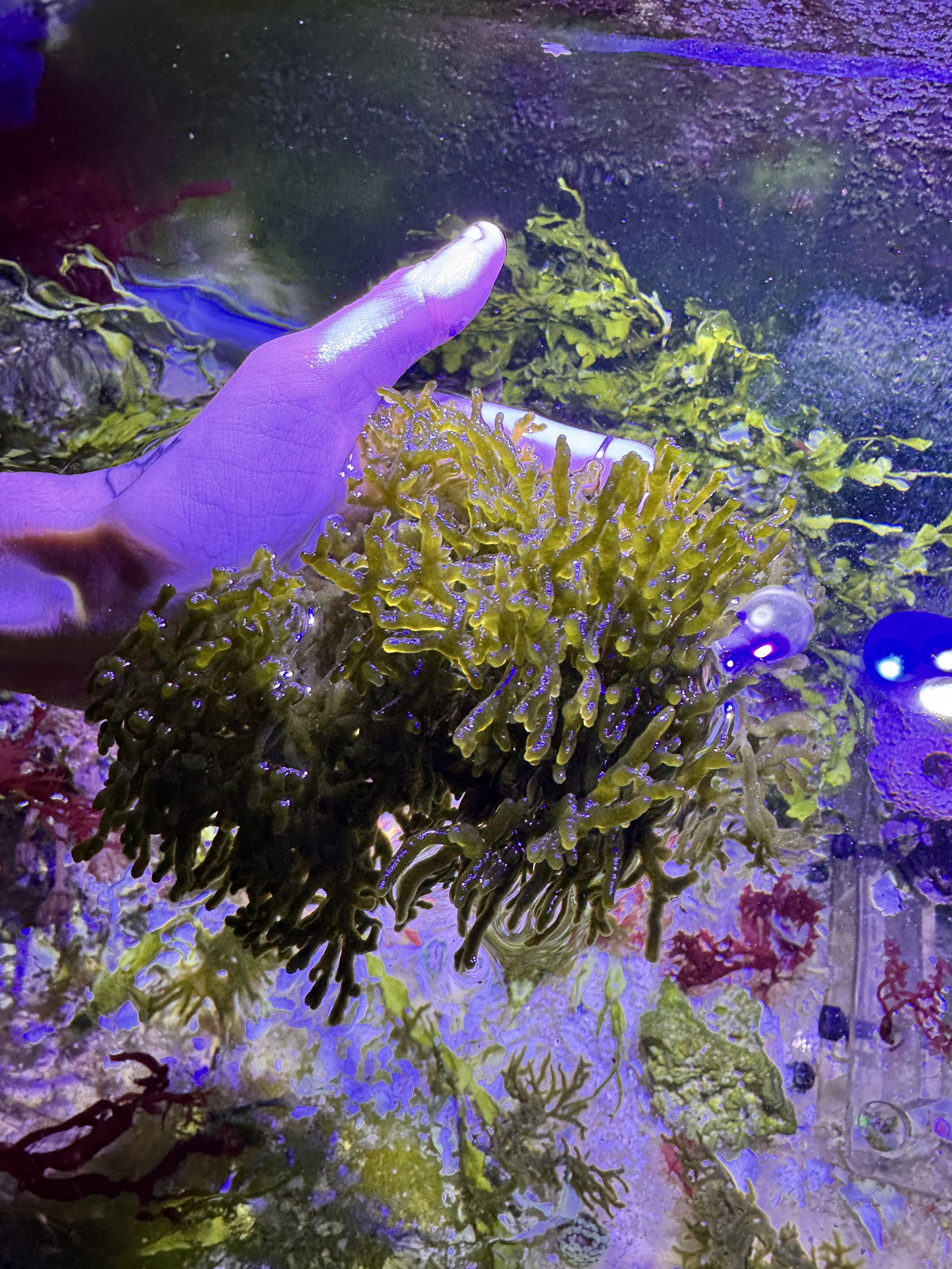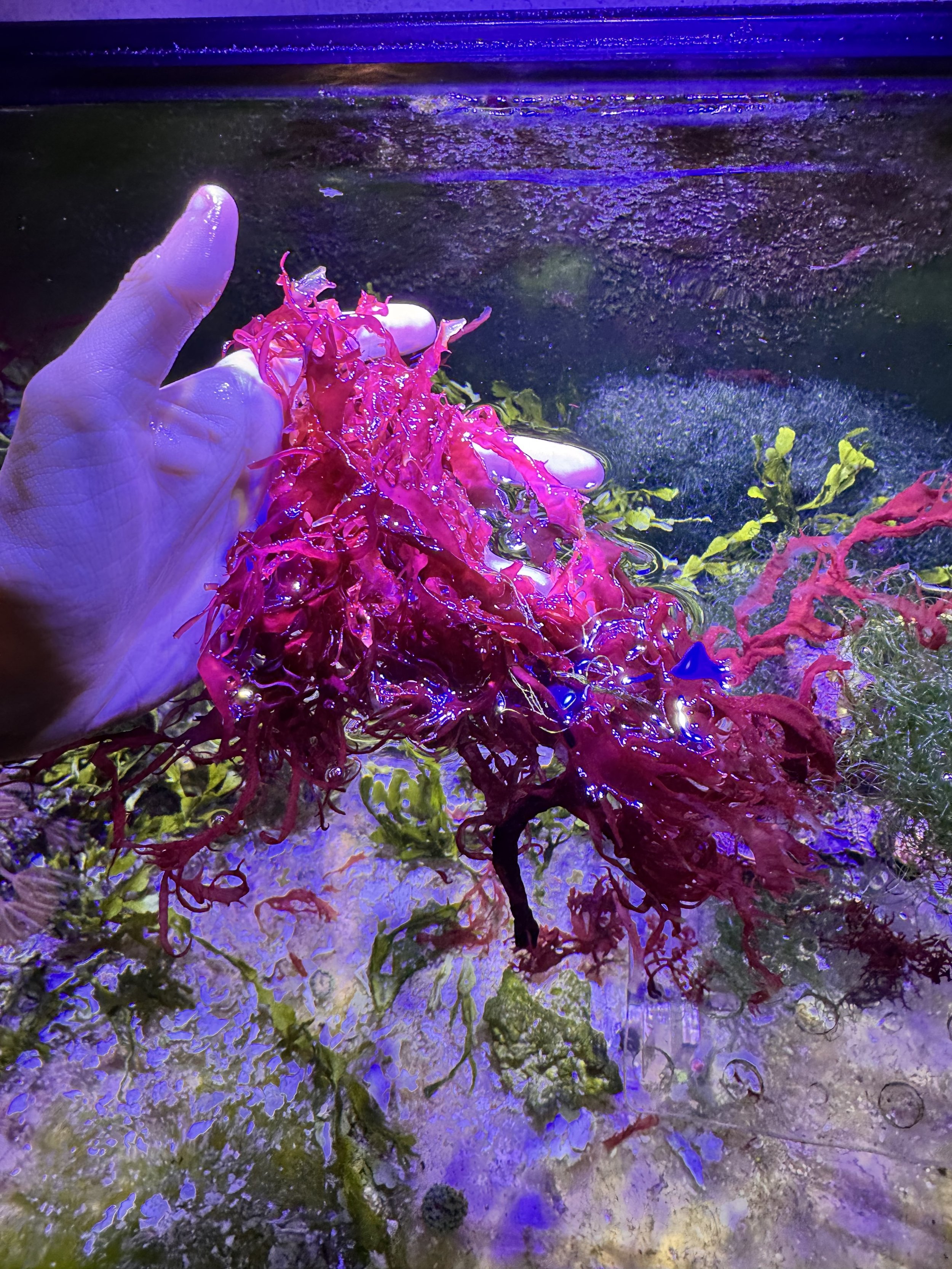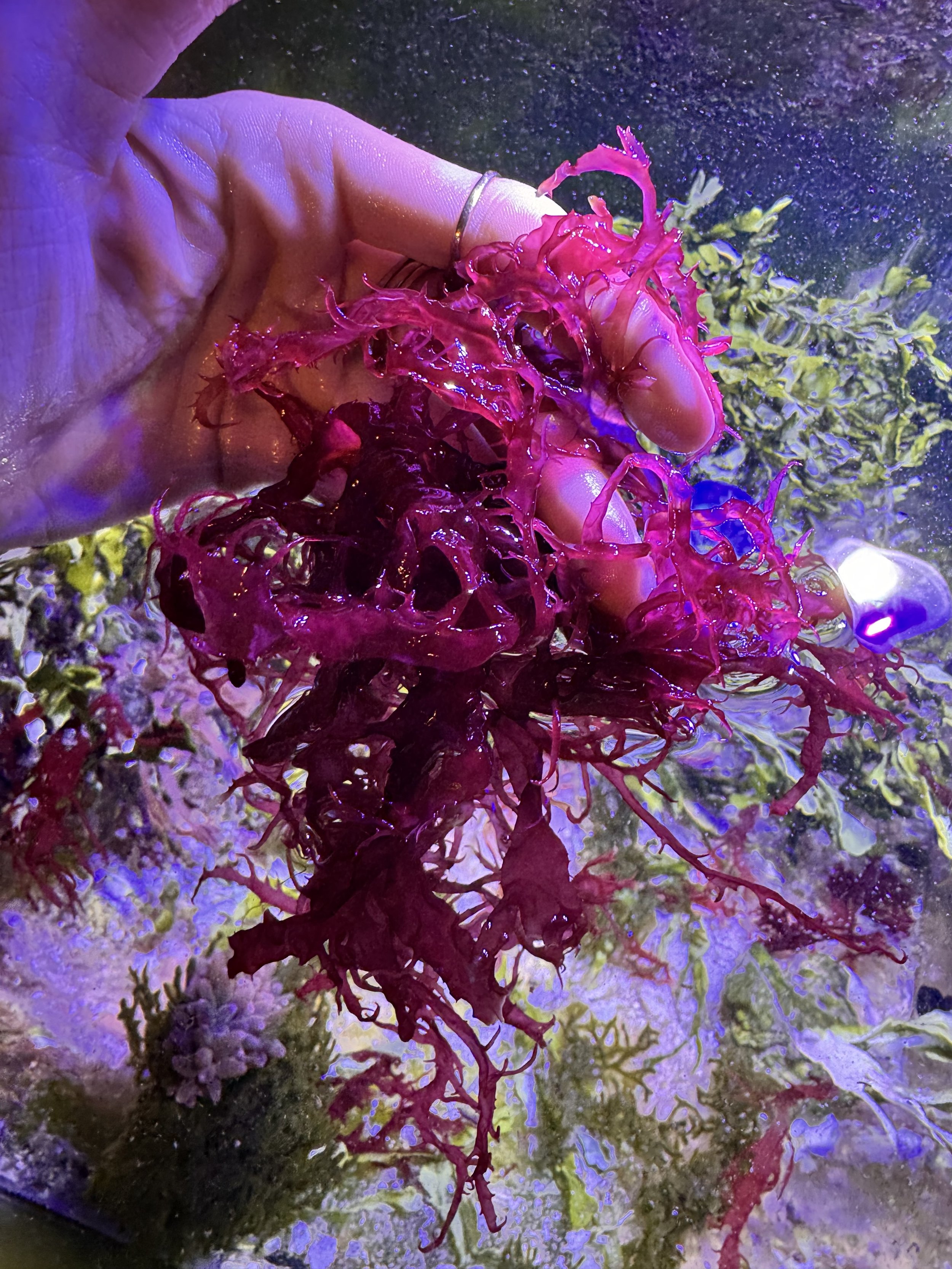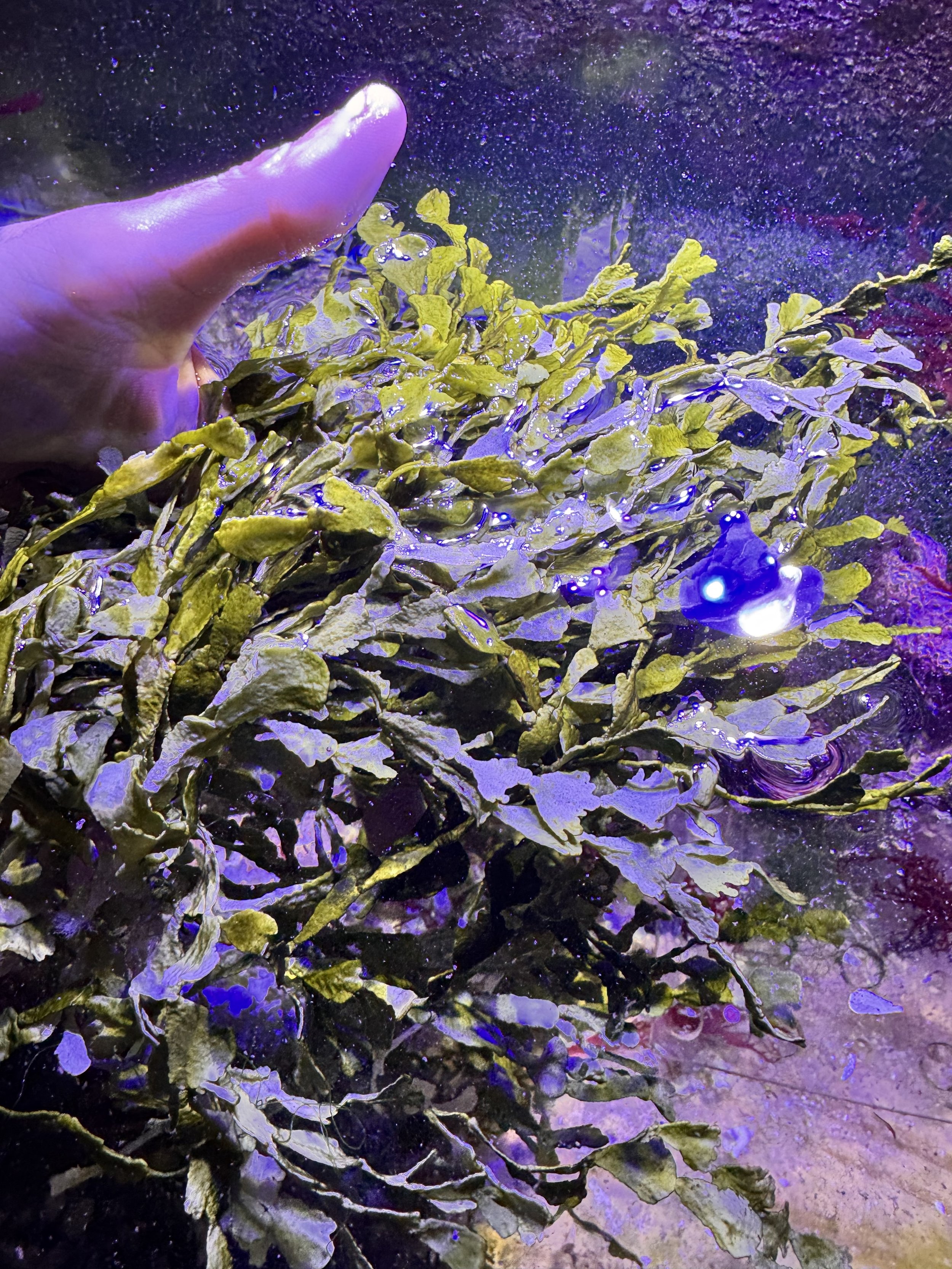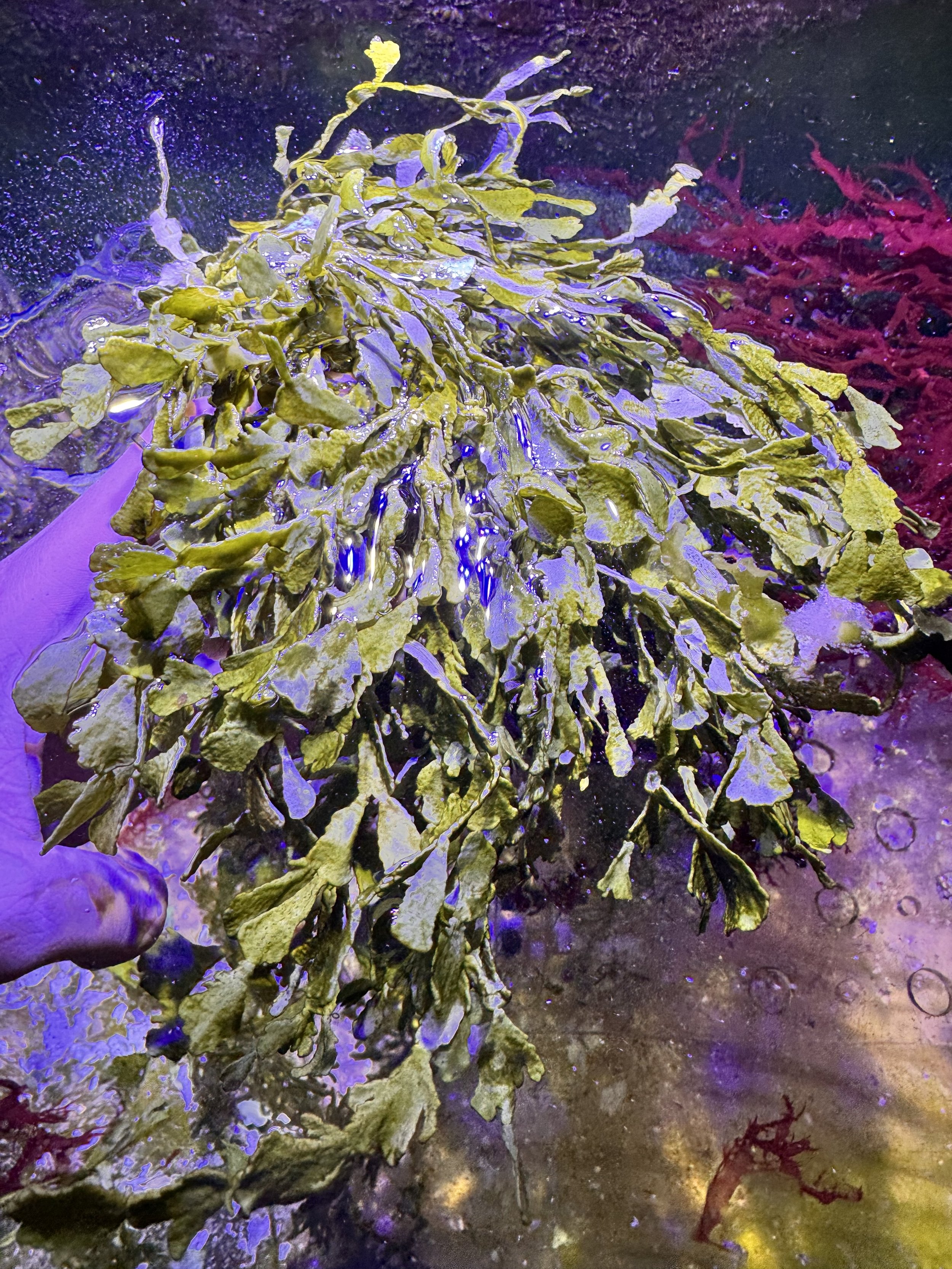Parameter Ideal Range
Temperature 72–78°F (22–26°C)
Salinity 1.024–1.026
pH 8.0–8.4
Alkalinity 8–12 dKH
Nitrate 2–20 ppm
Phosphate 0.02–0.1 ppm
Calcium 400–450 ppm
Magnesium 1250–1350 ppm
Chaeto needs nutrients. In ultra-low nutrient systems (ULNS), it will stop growing or melt.
Issue/Cause/Fix
Melting or disintegrating: Nutrient-starved or low flow - Increase NO₃/PO₄ and improve flow
Yellow or pale green: Light too weak or aging - Replace bulb, upgrade light
Stagnant ball center: Not tumbling or no water circulation - Shake, rotate, increase flow
📦 Acclimation
Match temperature (float 15–30 minutes)
Drip acclimate if shipping long-distance
Gently rinse in clean tank water to remove debris
Place in refugium or sump under bright light and good flow
🧼 Pest Note
Always quarantine or rinse new Chaeto—can contain bristleworms, flatworms, or bubble algae
If buying online, look for certified clean or pest-free sources
💡 Lighting
High-intensity lighting is key
Use a refugium-specific LED with PAR in the 5000K–6500K range or full-spectrum grow light
Photoperiod: 12–18 hours/day (often opposite the main tank lights to stabilize pH)
🌊 Flow Requirements
Moderate to high flow is essential to prevent detritus from settling and to oxygenate the mat
Ideal setup includes a tumbling ball in the refugium
If not tumbling, shake or rotate weekly to avoid die-off in the center
🍽️ Nutrient Needs
Requires measurable nitrate and phosphate
Starves in tanks with GFO, aggressive skimming, or heavy filter socks
Benefits from trace supplements like:
Iron (optional, boosts growth)
Iodine (in trace, not critical)
Chaeto boosters (if you’re dosing in ULNS tanks)
✂️ Pruning & Maintenance
Trim weekly or biweekly to export nutrients
Remove yellowing or decaying clumps
Rinse in tank water before putting back
Shake or rotate to keep water flow through all sides
🔬 Compatibility
100% reef-safe
Won’t attach to rocks or spread in display
Safe for all corals, fish, and inverts
Great home for pods, mysis, and microfauna

